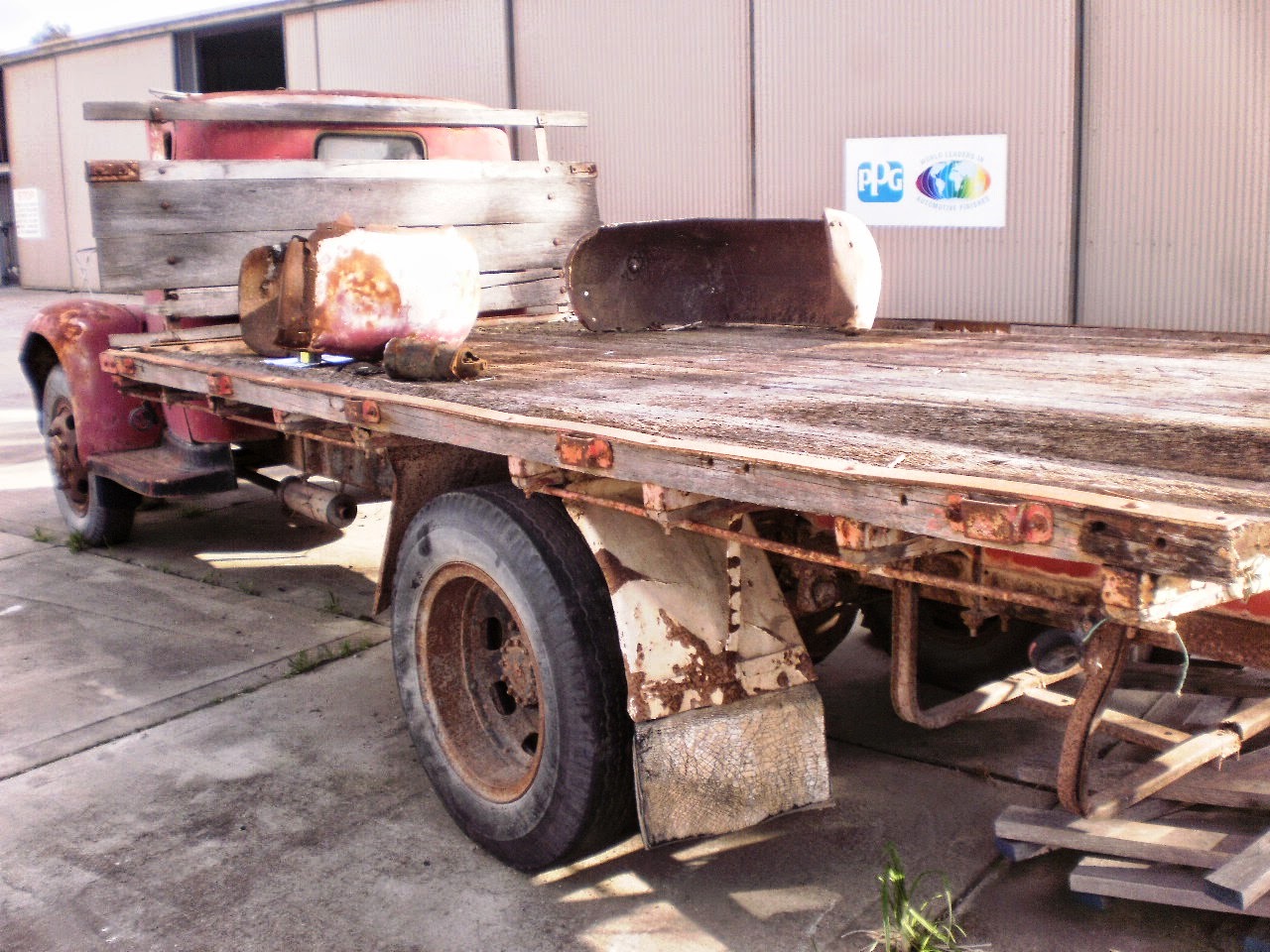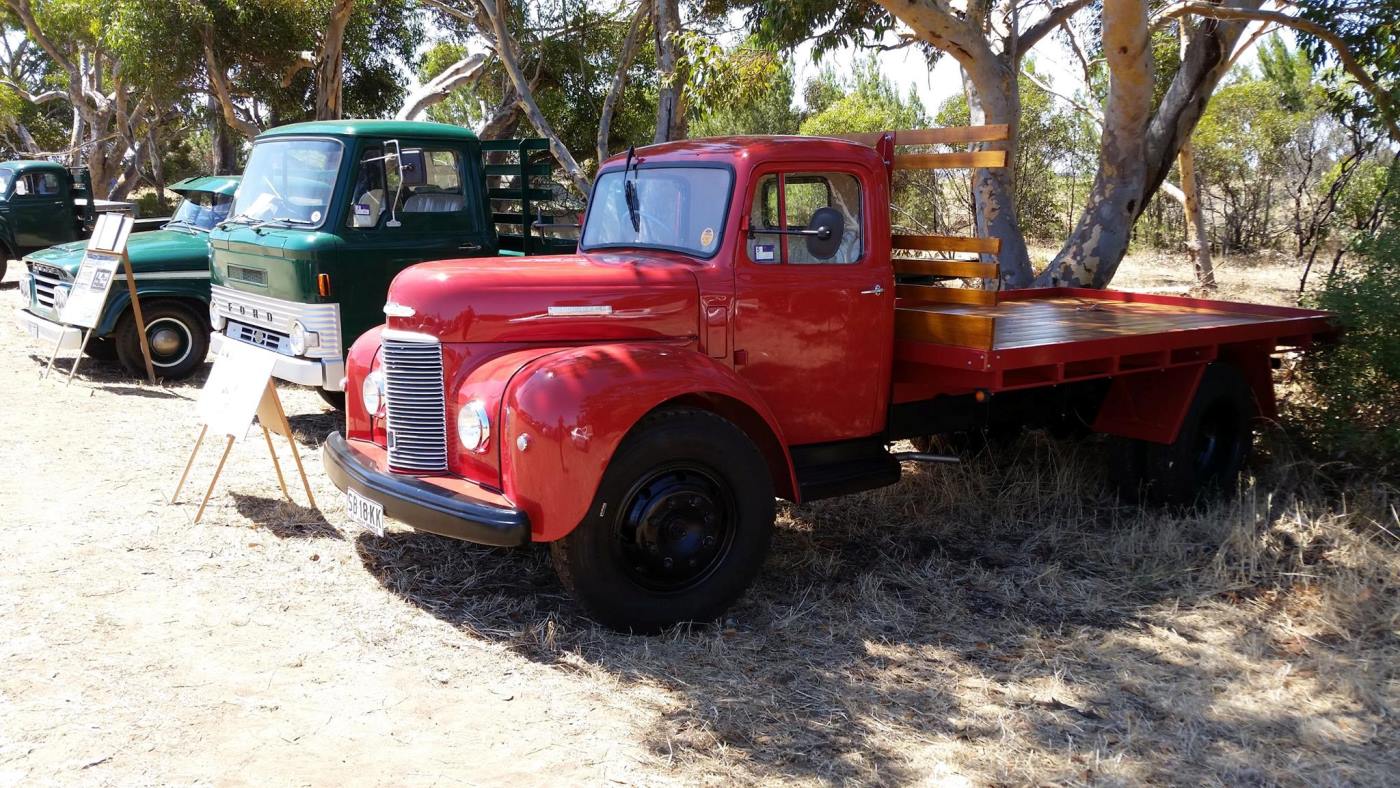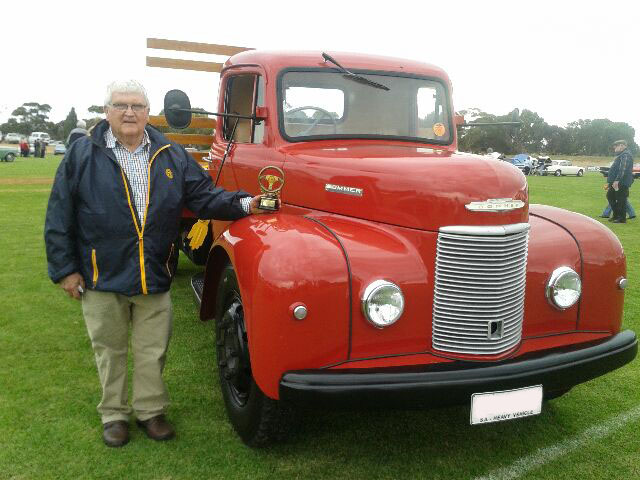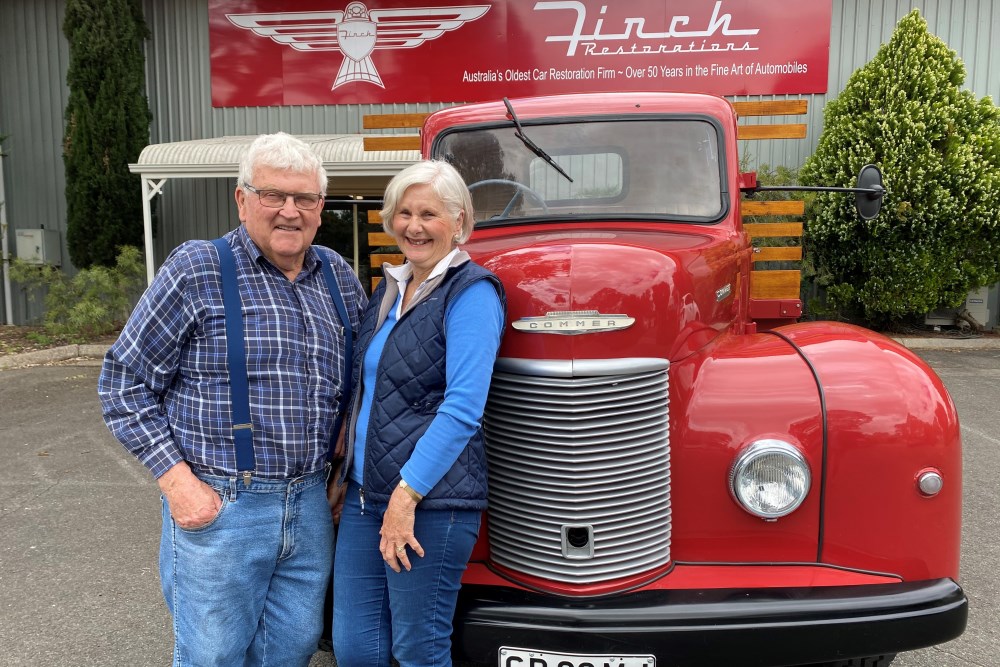1948 Commer 'Superpoise' Lorry
Client's Story - Margaret Rose
Margaret Rose, 70, is the proud – if somewhat unlikely – owner of a British-made Commer Superpoise S. Built around 1948, the truck is a beefy three-tonner. It’s wide at the axle, hard in the steering and makes a tremendous racket, especially when the 4.1- litre engine is running at the top of the 4-speed crash box.
“I’ve always known it as ‘the lorry’,” says Margaret. “That’s what Dad called it – ‘the lorry’.”
Margaret is no stranger to the vehicle and its post-war period charms, including the pugnacious bull-nose styling, the generous Bakelite-coated steering wheel and the yellow hand-shaped indicator extended on a steel rod.
“When I was 10 or 11, I used to drive it in the paddocks while two blokes loaded it with bales of hay. I only ever drove it in bottom gear, but I really enjoyed it. I remember it being hot in the cab – the side flaps were always open, there was dust and straw coming in through the open windows...”
The Commer was bought new in 1949 by Margaret’s father, farmer Charles Hicks. He in turn worked for his mother, Edith Alice Hicks, who owned the family’s broad acre farm in Agery on the Yorke Peninsula.
The lorry carried bags of grain to the giant grain stacks at Moonta, and made hundreds of trips to Gepps Cross abattoirs carrying EA Hicks & Sons prize-winning fat lambs. But as the farm prospered, the heavy, petrol-guzzling truck came to be superseded. By the 1970s, it ended up in the back of a large shed.
When Charles passed away in 2010, the farm went to his two daughters.
“My sister and I decided to sell the farm,” says Margaret. “When it came time to clear out the property, we found the old lorry in a shed. It hadn’t been used in about 40 years – and I suddenly got all sentimental about it! I know it sounds strange, but I’ve known this vehicle all my life.”
After the sale of the farm, Margaret was left with ‘way, way more money’ than she ever dreamed of. It also meant she had the means to do something she’d never considered. “I realised I could have the lorry restored.”
The derelict vehicle needed a lot of work. The engine had a blown head gasket, the chassis rails were badly rusted and rats had eaten through the upholstery and nested in the roof lining.
So in 2013 the Commer was loaded onto a tilt tray and driven 300km from Agery to Finch Restorations in Mount Barker.

The Finch specialists set to work stripping the vehicle back to a bare chassis, a process which inevitably revealed more challenges needing to be overcome. “The rear hubs were rusted solid,” recalls bodywork specialist Colin Higgs, “and the tail-shaft gave us real problems. We had to get new universal joints – in fact, we had to source them in England. We got the only two in existence at the time.”
New chassis rails were fabricated, a new timber flatbed was installed and the cab interior was given a total makeover.
“It ended up being close to a three-year project,” says Margaret, “so I visited the workshop a lot! But the guys at Finch were so engrossed, so passionate. I always said I had visiting rights, but it was their project.”
While the Finch craftsmen took responsibility to source authentic parts for the Commer, it was down to the family to accurately gauge a colour that would best match how the vehicle looked when it had first arrived at the Agery farm in 1949.
“We knew it was red but we didn’t have a proper match because it was so badly faded. So we spoke with other family members to get their recollections.”
The paint technicians at Finch were able to create a number of period-authentic options, conscious of how lead-based post-war paint provided different hues. “Back then, the lead content would have made the red a dirtier, pinker colour,” says Colin. “It was a long way from the bright reds you get with modern paint technology.”
Sure enough, it was a pinky-hued red that triggered a group response among the Hicks’ relatives: “That’s it.”
The authenticity didn’t stop with the paint. As with any restoration, Margaret was given options to upgrade and incorporate modern mechanics to make her lorry easier and more comfortable to drive. She declined. “We wanted to leave it exactly as it was. There’s not much room in the cab, there’s no power steering and there’s no aircon. But that’s how it was then – and that’s how I wanted it to be now!”
The finishing touch was the business name, repainted on the petrol tank under the timber tray: E.A HICKS & SONS, MOONTA.

Margaret and husband Ian have taken the lorry to a number of vintage vehicle events. But it was its first outing that the Roses will always remember.
“The restoration was finished around May 2015 – which was just in time for Kernewek Lowender, the Cornish Festival held in Moonta. They have a Cavalcade of Cars as part of the festival, so we drove the lorry back to its original home and entered that.”
People old and young saw the truck returned to the same streets where it had worked for a quarter of a century. “Quite a few people remembered it,” says Margaret. “They were thrilled at how beautiful it looked. I mean, it’s in better nick now than when it was bought!”
Today, the lorry lives permanently in a shed in Mount Barker, along with several trophies won at local shows.
“I often wonder what Dad would think of the old red lorry being brought back to life,” says Margaret. “I think he’d be tickled pink.”

Arrival Condition and Restoration Photos
The photos in this gallery show the condition of the Commer upon arrival at Finch Restorations and the condition of the Commer during and after the restoration at Finch Restorations..


